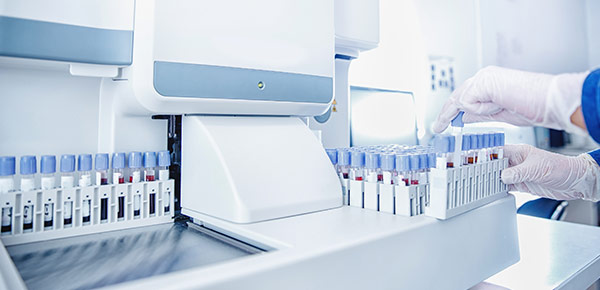
Proper biospecimen labeling in biorepositories, biobanking, or research labs is critical, especially when conducting clinical studies that link clinical data to biospecimen analysis. Confusing, insufficient, or unclear biospecimen labels can negatively affect the study, resulting in unpublishable results or the unnecessary loss of valuable specimens. As such, biospecimen should be labeled with a unique identifier (I.D.), the labeling should be consistent and uniform across samples, and ideally, a management system should be used to track samples.
Generating a biospecimen I.D.
The inclusion of a unique identifier is recommended by ISBER. However, they typically only state that a unique identifier should be issued for each sample and don’t elaborate on the “how.” They also recommend that a unique I.D. be assigned to each aliquot and not include any identifiable information about the donor, though they provide little detail beyond these guidelines.
When generating a biospecimen I.D., the requirements of all stakeholders should be considered while taking into account existing documentation and the IT infrastructure currently in place. Ideally, the biospecimen I.D. should be found on all sample containers and be logged into the sample management system. You can include additional information relating to the sample’s location, quality, and processing stage alongside the biospecimen data in the software.
Biospecimen labeling can be accomplished in several ways. Printed specimen labels are the current standard, with either 1D or 2D barcodes to improve tracking. However, this requires that the storage conditions be considered beforehand to ensure the biospecimen labels don’t fail. This can mean using cryogenic labels for liquid nitrogen storage and chemical-resistant labels during processing. Some other options include laser-etched barcodes, storing information within DNA, and the use of radio-frequency identification (RFID). These options are not yet widely used, primarily due to their high cost of implementation. Handwritten text and numbers are highly error-prone and should be avoided.
Here are some guidelines to follow when generating a biospecimen I.D.1:
- It should be unique for each tube or vial to allow management on a single tube level and to reduce the risk of mistaken identity.
- It should not contain any identifying information of the participant or donor.
- The biospecimen I.D. should make it clear which tubes belong to the same study participant (to improve tube handling in the lab).
- It should include information on what type of biospecimen is inside the container to allow for easy handling of samples in the lab and biobanking.
- With regards to quality management and assurance, the biospecimen I.D. should be human-readable (text/numbers) and machine scannable (barcodes/RFID) to reduce manual errors and allow automatic processing of samples.
Uniform biospecimen labeling
In addition to the guidelines outlined above, maintaining consistency when assigning unique identifiers is important to minimize confusion and improve handling efficiency. One way to ensure uniform biospecimen labeling is to create a universal nomenclature that can be applied to all samples, including standard abbreviations. Moreover, while using barcodes or RFID technology is highly recommended to reduce the likelihood of human error, the addition of a human-readable code is suggested as an added redundancy or for ease of handling. The unique identifier can also specify the type of specimen, the institution of origin, the pathology accession number, and the job number.
When assigning a unique identifier to a specimen, it is advised to use an alphanumeric code instead of a purely numerical one. Numerical codes are prone to transcription errors and can be easily transposed, while alphanumeric strings are easier to recognize and more distinct. If using barcodes, barcoding software, such as BarTender, can also be used to include the alphanumeric code reasonably effortlessly. Moreover, while it’s essential to protect patient privacy, this should not cause the biospecimen I.D. to become confusing or difficult to read. A proper balance between readability and patient confidentiality must be struck. The use of two identifiers might also be advisable under certain conditions. This allows the second code to act as a backup should the first be incorrect. This is more helpful in clinical settings, as researchers have a higher probability of backtracking samples in their database.
The placement of the label can also be important when identifying specimen containers. The specimen labels should be affixed to the body of the container, as lids and caps can be removed and separated from the original container. If you prefer to label the caps or tops of your containers, a secondary label should be added, as this will minimize the possibility of confusion and cross-contamination. Using chemical-resistant labels whenever possible to identify biospecimen containers is also recommended. When identifying slides, affixing the label on the top of the slide is most appropriate, while using biospecimen labels that will resist histological stains is suggested. When identifying paraffin blocks, the best practice involves using a dedicated cassette printer to identify the cassette, with an adhesive label applied once the cassette has been embedded in paraffin wax to identify the wax block. This provides added redundancy, which is critical when paraffin blocks are transported between institutions.
Proper training is also key to ensure the best labeling practices are maintained. Staff and sample recipients should be educated on proper labeling, as labeling practices can vary between labs and institutions. Establishing a uniform biospecimen labeling system and nomenclature that is taught to all relevant stakeholders is key to avoiding unintended errors and confusion.
Biospecimen management systems
When implementing a uniform identification terminology, it is recommended to implement a specimen tracking system that will work with your specimen labels to help track samples, manage inventory, and record sample data. The vendor can implement the software you decide to use, or in-house I.T. personnel can integrate it into your existing biospecimen management system. This computer-based inventory system should include a complete audit trail that recodes any changes made to specimen data. This includes what personnel has the authorization to make changes, how any changes were made, as well as the date, time, and reason for the changes. The inventory system should also account for different storage environments and quickly record the mass movement of samples from one location to another.
It is important that, prior to launching this new software, time is allocated to test and validate the final product. This will let you fix bugs and resolve performance issues. A training session should also be planned to ensure all relevant users are trained on the proper use of the software, and a user manual should be provided detailing its various features, as well as instructions for use and troubleshooting.
LabTAG by GA International is a leading manufacturer of high-performance specialty labels and a supplier of identification solutions used in research and medical labs as well as healthcare institutions.
References:
- Nussbeck SY, Skrowny D, O’Donoghue S, et al. How to Design Biospecimen Identifiers and Integrate Relevant Functionalities into Your Biospecimen Management System. Biopreserv Biobank.2014;12(3):199–205.
- KayAB, Estrada DK, Mareninov S, et al. Considerations for uniform and accurate biospecimen labelling in a biorepository and research environment. J Clin Pathol. 2011;64(7):634-636



